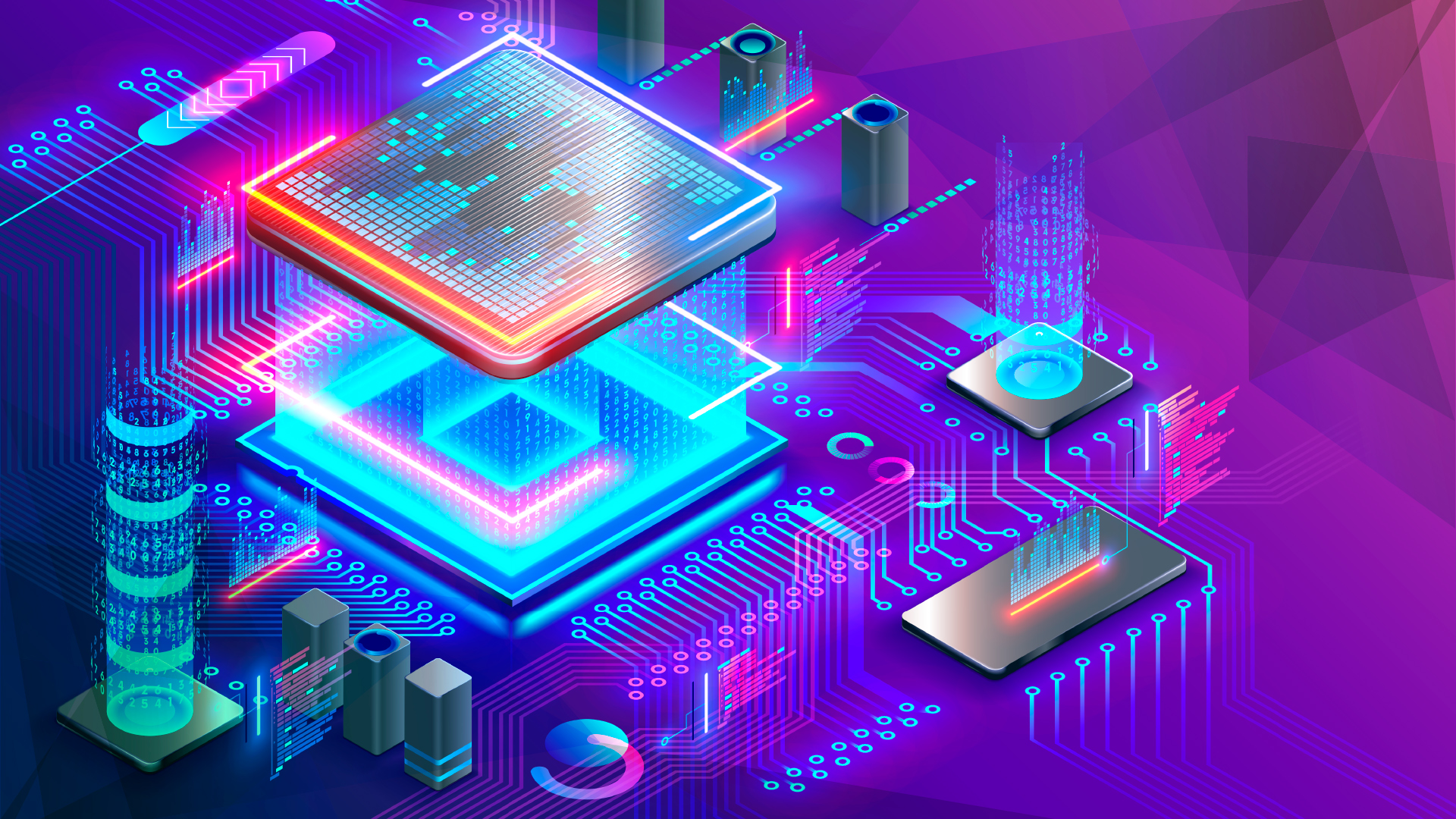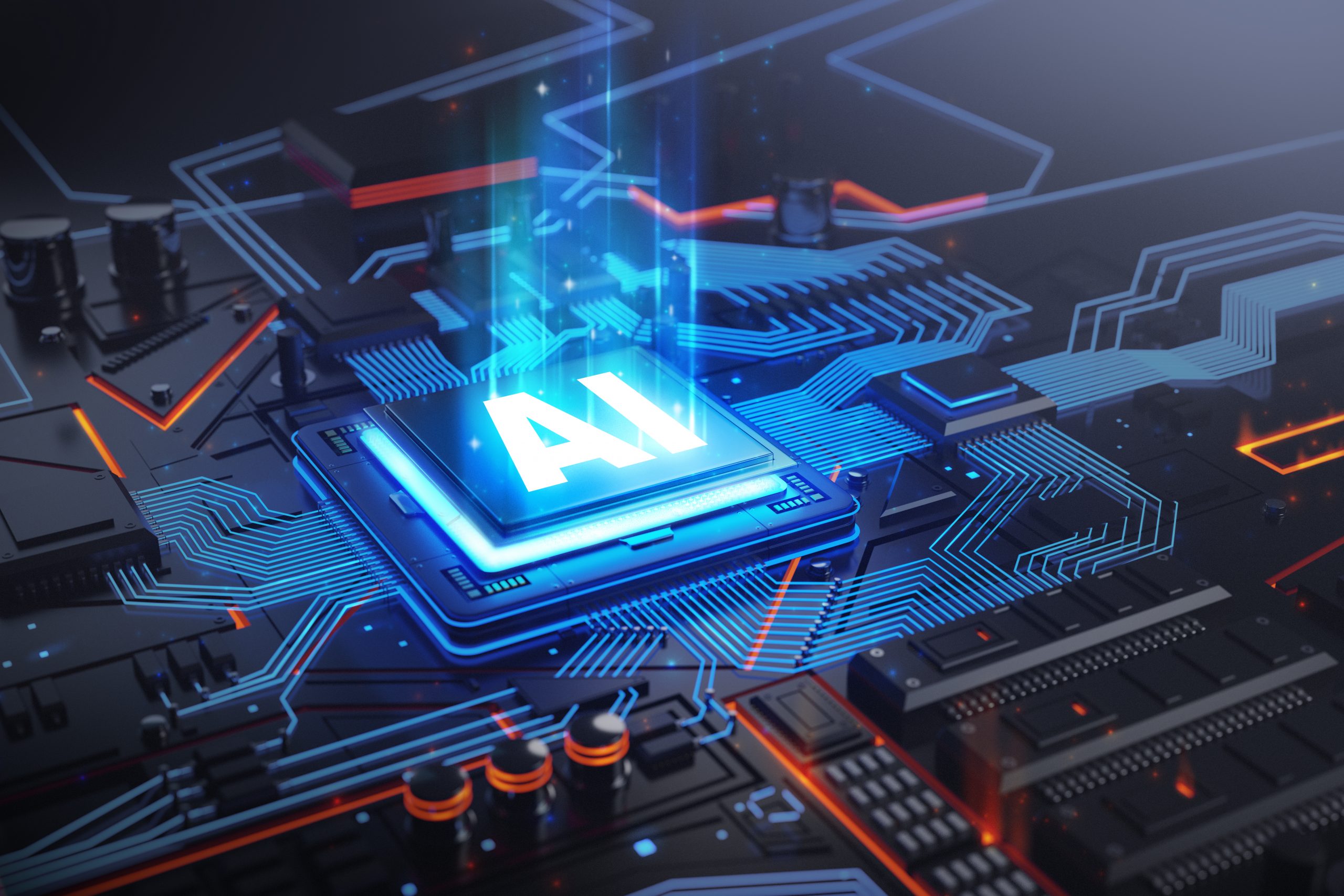The spread of applications, especially recently – machine learning, and especially deep neural networks (DNN) have had a huge impact on the growth of commercial applications using AI.
Thanks to the ever-increasing performance of computer hardware, DNNs have been successfully applied more than a decade ago, AI chips are a new advanced generation of custom chips for use in a variety of machine learning applications. The popularity of the use of artificial intelligence positively affects the need to design and create faster and cheaper chips among many technology manufacturers.
What is an AI chip?
AI chips are specially designed accelerators for artificial neural networks (ANN). They consist of user-programmable gate arrays (FPGAs), graphics processing units (GPUs), and application-specific integrated circuits (ASICs). And they are all specifically designed for AI.
Classic central processing units (CPUs), which are general-purpose chips, can also be used for some basic AI functions, but as AI advances and spreads, they will gradually become less useful. Like processing units (CPUs), AI chips gain efficiency and speed by integrating large numbers of much smaller transistors. However, unlike the CPU, AI chips have features specifically designed and optimized for AI use.
These special features greatly increase the computations required by AI algorithms, which successfully introduces algorithms, but reduces the number of transistors required for the same computation.
There are different categories of AI chips that are useful for different functions. The most popular and most used are FPGAs, GPUs and ASICs.
Why AI chips are better?
A good example will be the approximation of the use of AI chips in mobile devices, which in everyday life enable constant contact with home and loved ones not only thanks to a quick connection, but also thanks to modern applications that, apart from traditional contact, enable remote control of devices and elements of equipment, or constant preview, which is transferred to industrial environment enables remote, uninterrupted control over production processes or constant access to real-time data. AI chips are the future of mobile chips that are used in lightweight devices in private smartphones or industrial tablets. This is because they can go far beyond the basic functions of these devices. The main task of AI chips is to perform specific AI functions more efficiently and effectively.
Normal chips are not equipped enough or better suited to meet machine learning requirements. AI chips have additional neural processing units (NPUs). The use of these chips provides longer battery life and can bring the AI to work much faster. AI chips provide energy efficiency and high performance for AI applications due to their computing capabilities. Thanks to AI chips, mobile devices will be able to perform multiple functions at the same time, they can also handle certain programming functions more efficiently and faster than ordinary chips, and this is because the main processor will be much faster and more efficient.
Specially designed chips that integrate machine learning and AI technology to make devices smart enough to enhance machine functions for more efficient deep learning. Machine learning is just a way to achieve AI performance. On the other hand, AI chips are multi-processor systems, each with its own specialized function.
AI chips allocate four to five times more bandwidth than regular chips. This is critical as AI applications require much better bandwidth between CPUs due to their need for parallel processing to run effectively and efficiently. AI applications typically require parallel processing capability to run highly developed algorithms and training prototypes successfully. AI chips offer over ten times more competitive power than artificial neural network (ANN) applications in this regard.

Why do we need GPUs for AI?
With the demand for new technologies, the introduction of AI solutions to the industry and the capacity of 5G, a large number of organizations implementing AI operations are turning to the use of GPUs to accelerate deep learning processes that prove to be too long.
GPUs are microprocessors specially designed and created to perform specific tasks, which are able to provide parallel processing of functions and can be upgraded to improve performance in deep learning processes. These chips are capable of performing parallel processing operations, which allows organizations to combine GPUs into groups and assign complex tasks to the resulting groups. They can also use GPUs individually with groups that are already assigned to train independent algorithms. GPUs provide better and higher throughput than CPUs, up to 750GB/s compared to 50GB/s processors, which significantly contributes to handling the large amount of data needed by artificial intelligence. In addition, graphics processors are equipped with many cores, which can also be grouped and combined with processors, which translates into a significant increase in computing power.
AI chips will soon become even more common.
The cost-effective deployment of artificial intelligence on a large scale will require state-of-the-art specialized integrated circuits. The use of such solutions, which are much more expensive than older versions or general-purpose chips, and the fact that the US and several allied democracies still have the complex supply chains required to produce these chips, provide an opportunity for new export control policies.
Moore’s Law states that the number of transistors in a single computer chip doubles approximately every two years. As a result, the chips become millions of times faster and more efficient over this period. Today’s state-of-the-art processors use transistors that are only a few atoms thick. However, as logic gates become smaller and smaller, capital expenditures in the semiconductor industry continue to grow at an accelerating rate, which affects Moore’s Law, which slows down and the time it takes to double transistor density increases.
Creating low-level AI chip designs is considered difficult, time-consuming, and labor-intensive. To reduce the number of transistors needed for the same computation using a CPU, a reduction in precision would be necessary.
Different types of AI chips are useful for different tasks. GPUs are mostly used for the initial development and refinement of AI algorithms; this process is known as “training”. FPGAs benefit primarily from “inference,” or the use of trained AI algorithms to enter real-world data. ASICs can be designed for learning or inference, but more often they serve the latter purpose.
Why cutting-edge AI chips are essential for AI
Why are AI chips essential in today’s world? To answer this question, we must first understand that most commercial AI applications rely on deep neural networks. What’s more, the number of these types of apps has grown exponentially in recent years and is expected to continue to grow. This increase will directly translate into a significant amount of revenue for the entire market in the next few days.
The next issue to solve is – what should be the criteria for assessing AI equipment? There is always the option of turning to cloud service providers, but this is not a good choice as all this work is time consuming and expensive. You can trust the cloud for initial testing.

Conclusions
In the end, everything can be reduced to a short final conclusion. Ordinary chips do not have the computing power needed to handle many complex AI functions, and AI chips can handle large-scale computing functions much faster than classic chips. Artificial intelligence is developing rapidly and is becoming an increasingly large part of our lives at home and at work, and for its full implementation on each of these levels, it will be necessary to use AI Chips in new devices.
A breakthrough awaits us, not only in industrial production solutions in the form of e.g. learning machines, but also new opportunities offered by AI used in the Chips of everyday devices. In order to get closer to new technological solutions, development in the production and application of AI Chips will be necessary, which will be economically optimal enough to introduce AI gradually into industry and everyday life.
Finally, remember to subscribe to the newsletter to stay up to date with the latest news from the Industrial Automation industry. Also, if you need electronic components, get a quote from Oem24 today.

